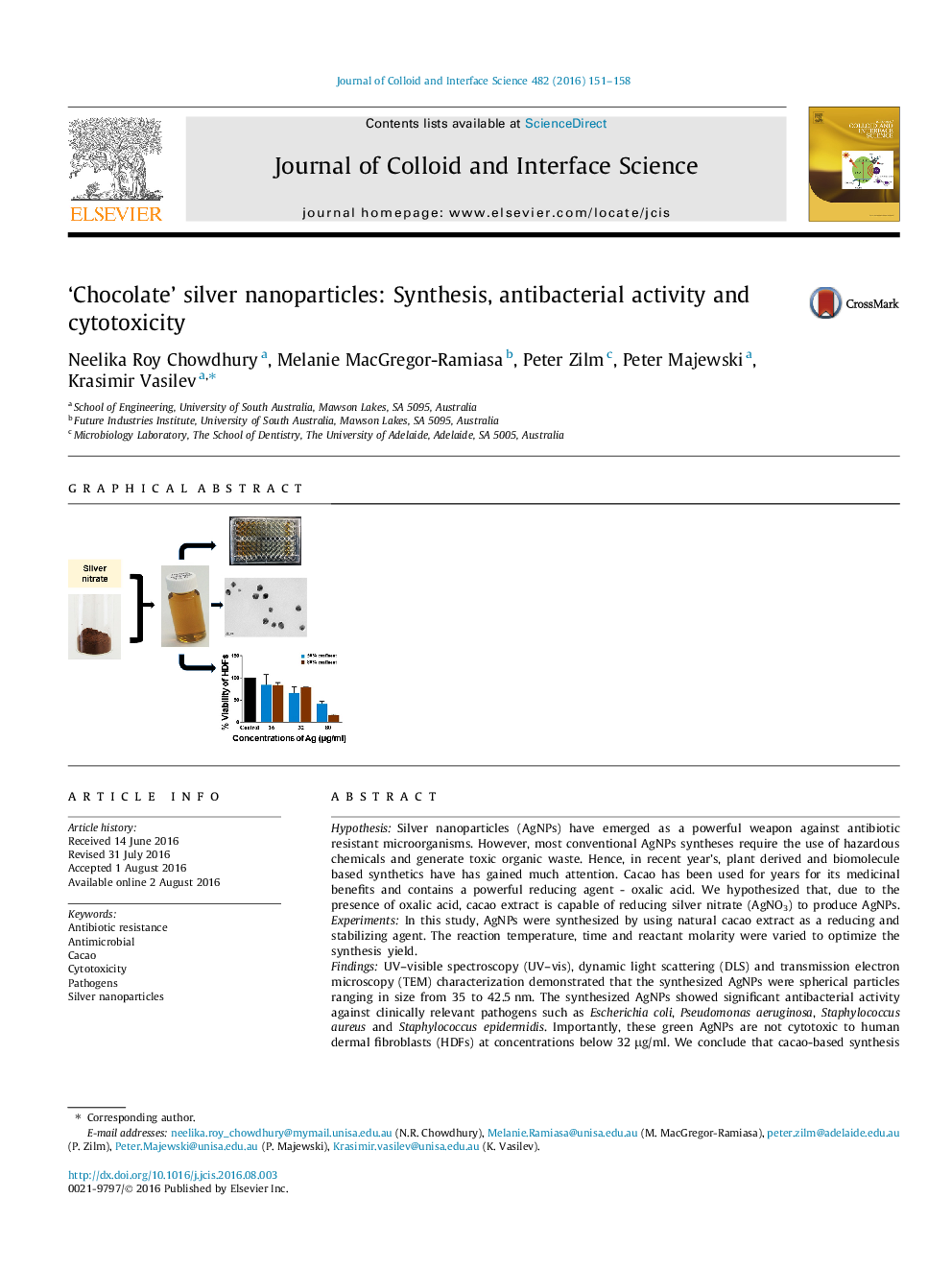| Article ID | Journal | Published Year | Pages | File Type |
|---|---|---|---|---|
| 606127 | Journal of Colloid and Interface Science | 2016 | 8 Pages |
HypothesisSilver nanoparticles (AgNPs) have emerged as a powerful weapon against antibiotic resistant microorganisms. However, most conventional AgNPs syntheses require the use of hazardous chemicals and generate toxic organic waste. Hence, in recent year’s, plant derived and biomolecule based synthetics have has gained much attention. Cacao has been used for years for its medicinal benefits and contains a powerful reducing agent - oxalic acid. We hypothesized that, due to the presence of oxalic acid, cacao extract is capable of reducing silver nitrate (AgNO3) to produce AgNPs.ExperimentsIn this study, AgNPs were synthesized by using natural cacao extract as a reducing and stabilizing agent. The reaction temperature, time and reactant molarity were varied to optimize the synthesis yield.FindingsUV–visible spectroscopy (UV–vis), dynamic light scattering (DLS) and transmission electron microscopy (TEM) characterization demonstrated that the synthesized AgNPs were spherical particles ranging in size from 35 to 42.5 nm. The synthesized AgNPs showed significant antibacterial activity against clinically relevant pathogens such as Escherichia coli, Pseudomonas aeruginosa, Staphylococcus aureus and Staphylococcus epidermidis. Importantly, these green AgNPs are not cytotoxic to human dermal fibroblasts (HDFs) at concentrations below 32 μg/ml. We conclude that cacao-based synthesis is a reproducible and sustainable method for the generation of stable antimicrobial silver nanoparticles with low cytotoxicity to human cells. The AgNPs synthesized in this work have promising properties for applications in the biomedical field.
Graphical abstractFigure optionsDownload full-size imageDownload high-quality image (89 K)Download as PowerPoint slide
